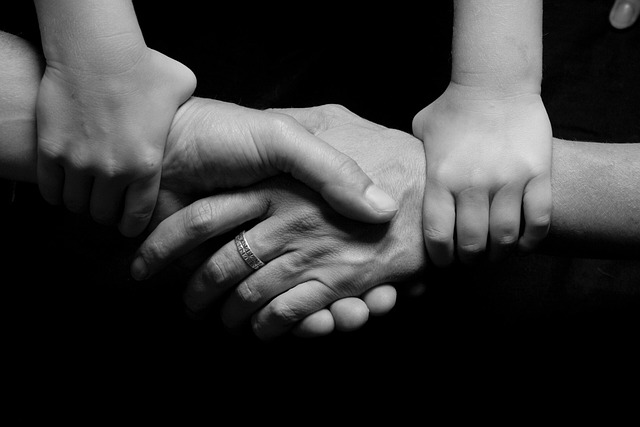Love and connection should never require losing yourself. But if you’ve grown up in an enmeshed family or been in enmeshed relationships, you may have been taught that true closeness means merging—thinking the same, feeling the same, needing the same.
The idea of having you and having myself might feel impossible. Because in enmeshment, the unspoken rule is: If I love you, I don’t get to fully be me.
But is that true? Is it really okay to have both? The short answer? Yes. But breaking free from the belief that you have to choose—connection or autonomy—is a journey.
What Does Enmeshment Look Like?
Enmeshment isn’t just about being close—it’s about a loss of individuality. In an enmeshed relationship, the lines between “me” and “you” become blurred, creating a dynamic where:
- Disagreeing feels like betrayal. Having a different opinion, lifestyle, or dream may be seen as going against the relationship.
- Your emotions are not fully your own. If they’re upset, you feel guilty. If they’re happy, you feel relief. Your emotional state is tied to theirs.
- Boundaries feel unnatural or selfish. Saying “no” or asking for space may trigger guilt, as if you’re abandoning them.
- There’s an expectation to stay the same. Growth, change, or independence is seen as a threat to the relationship rather than a natural part of life.
- Love feels conditional. The relationship feels secure only if you meet unspoken expectations—whether that’s always agreeing, always being available, or always putting their needs before yours.
In this dynamic, the question “Can I have you and have myself?” is met with fear. Because if you start fully being yourself, you might lose them. And if you keep them, you might lose you.
But this is a false choice. Healthy relationships do not require self-abandonment.
Why Enmeshment Happens
If you struggle with enmeshment, it’s not because you’re weak or “too attached.” It’s because, somewhere along the way, you were taught that love requires merging.
- Family Patterns: In some families, emotional closeness is mistaken for emotional fusion. You were expected to be loyal to the family above all else, even if it meant sacrificing your independence.
- Parent-Child Role Reversals: If a parent relied on you for emotional support, you may have learned that your job is to meet others’ needs, not to develop your own identity.
- Cultural Expectations: Some cultures emphasize group identity over individuality, making it hard to separate what you truly want from what is expected of you.
- Fear of Abandonment: If you’ve been rejected or abandoned before, you may unconsciously believe that keeping people close—at any cost—is safer than standing on your own.
These dynamics create a belief that love and individuality cannot coexist. That having you means losing me. And that is where the healing begins—challenging that belief.
How to Have Both: Connection and Autonomy
1. Acknowledge That Enmeshment Is Not Love
It might feel like it. After all, enmeshed relationships often look deeply connected. But true love does not require self-erasure. Real love creates space, not just closeness. It allows both people to exist fully—not just in relation to each other.
Ask yourself:
- Do I feel like I have to shrink, filter, or suppress parts of myself in this relationship?
- Do I fear that being fully me will cause disapproval or distance?
- Am I constantly prioritizing their needs and emotions over my own?
Recognizing these patterns is the first step in breaking free.
2. Start Defining Yourself Outside the Relationship
If your identity has been tied to someone else’s expectations, it’s time to start asking: Who am I, separate from them?
- What do I like—not what I’ve been told to like?
- What are my values—not the ones I’ve been expected to follow?
- What makes me feel alive, fulfilled, and whole?
Building a strong sense of self doesn’t mean rejecting the people you love. It means showing up in relationships as a whole person, not a reflection of someone else.
3. Set Boundaries Without Guilt
If you’ve been enmeshed for a long time, boundaries might feel like rejection. But they’re not. Boundaries are what allow relationships to be healthy rather than consuming.
- “I love talking to you, but I can’t always be available immediately.”
- “I care about your feelings, but I need to make this decision for myself.”
- “I value our relationship, but I also need space to grow as an individual.”
At first, these boundaries might feel uncomfortable—both for you and for them. But discomfort doesn’t mean you’re doing something wrong. It means you’re doing something new.
4. Accept That Some People Won’t Understand
Not everyone will welcome your autonomy with open arms. Some may react with guilt trips, emotional withdrawal, or even anger. They may say things like:
- “You’ve changed.”
- “You don’t care about me anymore.”
- “I guess I’m not important to you.”
This is hard. But their reaction is not proof that you’re doing something wrong—it’s proof that the dynamic is shifting.
You are not responsible for managing their discomfort. You are responsible for honoring your own growth.
5. Redefine Love as Something That Includes Freedom
Healthy relationships don’t say: “If you love me, you’ll never leave my side.”
They say: “I love you, and I trust you to be yourself.”
- Love doesn’t demand sameness. It allows difference.
- Love doesn’t suffocate. It breathes.
- Love doesn’t ask you to give up yourself. It makes space for you to exist fully.
You do not have to choose between connection and autonomy. Real love allows for both.
Final Thoughts: It’s Okay to Have Both
If you’ve spent your life believing that love means fusion, choosing yourself might feel selfish. But it’s not.
It’s okay to have deep, meaningful relationships and have your own voice.
It’s okay to be part of a family and have your own path.
It’s okay to love someone and have your own dreams, boundaries, and identity.
You don’t have to choose between connection and selfhood. You are allowed to have both.
The right people—the ones who love you in a healthy manner—will want you whole, not half. They will want you, not just the version of you that makes them comfortable.
So, yes. It is okay to have them and have yourself. It’s not just okay—it’s necessary.













